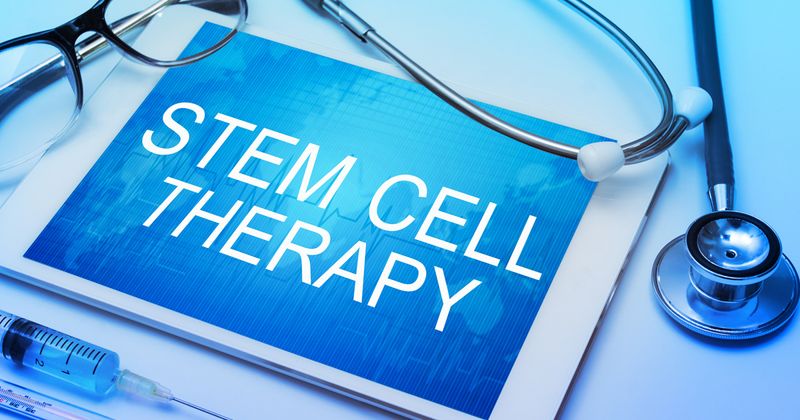Finding hope in ‘wild west’ of novel pain management approaches
While poor regulation and unsafe products are prevalent, novel pain management strategies such as stem cells and electrical stimulation nevertheless provide hope for patients, according to a presenter at the 2020 Congress of Clinical Rheumatology-East.
“Pain is the No. 1 reason for visits to clinic,” Alan David Kaye, MD, PhD, professor, provost, chief academic officer and vice chancellor of academic affairs, and of the departments of anesthesiology, pharmacology, toxicology and neurosciences at the Louisiana State University Health Sciences Center, said in his presentation.

Kaye said such a presentation is “timely” for a rheumatology audience because stem cells, platelet-rich plasma, noninvasive surgical techniques and electric stimulation have undergone more rigorous study in recent years. “It may be good to try to get your patients to try some of these interventions rather than to sit around writing prescriptions for opiates,” he said.
The ‘wild west’ of regenerative medicine
As for regenerative medicine, Kaye said there is a “broad definition” of methods to repair, replace and restore damaged and diseased cells or organs.
Of these methods, stem cells generally have the highest profile. “Stem cells can be used in all kinds of conditions, including neuromuscular conditions, osteoarthritis and rheumatoid arthritis,” Kaye said.
Kaye described stem cells as “pluripotent,” suggesting that “they can differentiate into a number of different types of adult cells.”
While embryonic stem cells can have utility, they face some opposition on moral grounds. “Mesenchymal stem cells are politically neutral, as opposed to embryonic stem cells, which come with moral baggage,” Kaye said.
In terms of specific applications, mesenchymal stem cells have been used in rotator cuff repair and vascular necrosis of the hip, according to Kaye. “They are showing improvement in pain and disability scores,” he said.
Kaye warned, however, that unlicensed stem cells have been proliferating. He described the regulatory situation surrounding stem cell therapy as the “wild west.”
Platelet-rich plasma is another regenerative approach that could have utility in the rheumatology space, but Kaye warned that there is still a “learning curve” about how the chemokines and cytokines that are involved can facilitate healing. “We have a body of evidence now of approximately 7 years of studies,” he said.
The other concern with platelet-rich plasma is that there are “snake oil salesmen” who peddle products that may not be safe or effective, according to Kaye. He added that a “lack of regulation” has allowed this to happen.
“In essence, regenerative medicine is complicated, it is unfamiliar, and it is not precisely regulated at this time,” Kaye said. “It needs to be systematic and consistent from place to place.”
Surgery and electricity
Turning to lumbar endoscopic spinal decompression, Kaye said this surgical technique has a “rich history” that stretches back decades. “They have gotten better and better, with the use of lasers,” he said. “The technique results in decompression, allowing the nerve roots to regenerate.”
The minimally invasive nature of the procedure may be attractive for rheumatology patients with chronic back pain.
Similarly, the minimally invasive lumbar decompression (MILD) procedure involves the safe use of an epidural. After the cut is made, the surgeon will “pull or remove the hypertrophied ligament that is causing stenosis and pinching off the nerve root,” Kaye said. “It can reduce pain and increase mobility of the patient.”
Kaye said this method has a “proven history,” with some 20,000 cases performed. There have been 12 clinical trials and 18 peer-reviewed articles describing its use published through 2016. “No side effects have been reported,” he said. “The MILD procedure has shown statistically significant efficacy compared with epidural steroids.”
Moving toward procedures such as transcutaneous electrical nerve stimulation (TENS), spinal cord stimulation (SCS) and peripheral nerve stimulation, Kaye suggested that the history of electricity in medicine also has a deep and rich history.
“These approaches can be used in post herpetic neuralgia, ischemic pain in the legs and intractable angina,” among others, he said. Electricity-based procedures could have utility in “many different patients with many different problems.”
Before initiating an electrical stimulation, Kaye urged clinicians to psychologically evaluate whether patients need, want and can manage such an implant in their body. “These things need to be considered, and then there must be a 5- to 7-day trial” where the patient grows accustomed to the device.
Contraindications for electrical intervention include treatment with blood thinners and active infection, along with an unfavorable psychological evaluation.
In closing, Kay stressed that there are “lots” of novel pain approaches that have emerged in recent years. “Regenerative medicine has a lot of promise,” he said.









